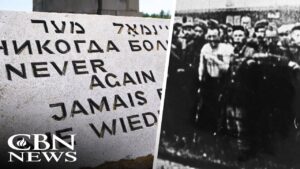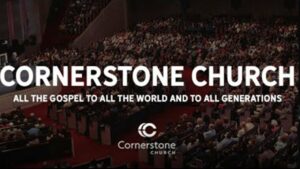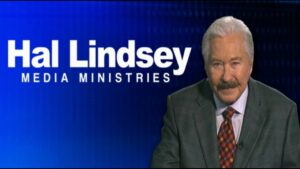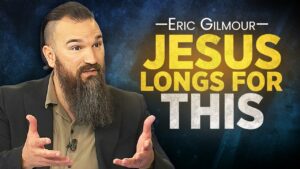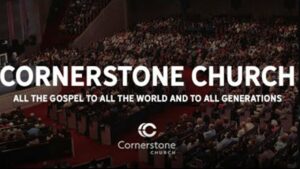John Wesley and Casting out demons! (Thunderstuck)
John Wesley had a deliverance ministry. Like many, I expected this but did not know more about this. History of the Church often did not record ministry of miracles, healing, and deliverance very well before the Topeka Outpouring of 1901 (Pentecostal movement). As a result, we don’t hear a lot about the signs and wonder …
John Wesley had a deliverance ministry. Like many, I expected this but did not know more about this. History of the Church often did not record ministry of miracles, healing, and deliverance very well before the Topeka Outpouring of 1901 (Pentecostal movement). As a result, we don’t hear a lot about the signs and wonder before the 20th century.
Peter Bellini from Union Theological Seminary has given us the story of what Wesley believed and practiced in the name of cast-out devils. As a historian of revival, I was surprised at how much of an emphasis there was on early Methodism.
Thunderstruck (Not AC/DC) is a book that tells us more. Some would wonder if Wesley was a “Pre-Pentecostal.” If you read this with that lens, you will miss what the book is establishing. Peter Bellini is calling the Methodist Churches back to their roots, not trying to make them into classic Pentecostals.
While it is true, there is much shared theological identity with Wesleyanism, Pentecostals are not Methodists for a reason. It is wise to view them from different traditions of doctrine. In reading Thunderstruck, I often had to stop and ask myself, “If I was a Methodist, how would I view this?”

Understanding Thunderstruck
The term is one that Wesley himself used for people who were thrown to the ground and delivered from sin. It was similar to being slained in the Spirit but it is not the same thing. People were forced by the Holy Spirit to the ground face first and would be arrested by the Spirit for hours. When they got up, they would be set free from sin. This became known as entire sanification. This is where a person would be delivered from worldliness and in love with the Lord at a deep level.
Understanding this experience is critical to seeing how Wesley deals with deliverance in his preaching ministry. Bellimi spends quite a bit of time considering this and even has a whole chapter about the similarities between early Methodism and modern Charismatic beliefs. While not the Benny Hinn of the 1800’s, they have more in common than people will realize.
The founder of the Methodist Church was far from being a cessationist, like many like to paint him to be. (The same is true of Salvation Army with William Booth.) John Wesley made casting out devils normal in some cases and it was not related to the doctrine of entire sanctification. Peter Bellini does a great job exposing the miracle ministry of the early Methodist, yet again!
One thing that I liked is that while covering the ministry of Wesley, he stayed with the historical facts more than adding personal insights (that is later in the book!) It was good to know actually happened and did not happen. I will also say that I valued the footnotes included. It is a great place to start to dig into more of where some of the literature can be if one is interested in learning about the miracle ministry of John Wesley.

About Personal views!
The back half of the book (over 85 pages) is less about Wesleyan theology and more about Bellini’s personal views on deliverance that included studies, checklists, and charts. I actually would rather see more of how the Father of Methodism deals with demons. Much of the information here came from other books by the author.
In addition, I found some of the information in these sections harmful and extreme. In some places, it is implicated that mental illness is demonic oppression. One could easiest believe that trauma is a demon by the way it reads. In truth, I was disappointed with these charts.
While there is helpful information presented, it would be wise for someone to check his charts against the scriptures as a good berean.
Personally, I found the chapter on spiritual gifts from a Wesleyan point of view helpful for someone in a Methodist church struggling to believe in the gifts of the Spirit. It did a very good job of developing what is gifts and what is not. I especially like the charts about natural talents and spiritual gifts. This is a serious pitfall for many evangelicals.
Peter Bellini goes on to quote (at length) some of the desert fathers’ prayer for deliverance over people. This shows that the ministry of casting out devils did not die with the apostles as some suggest but carried into the first centuries of the church life. It also was active in almost every century of the history of the church.

Scribe writing old document
Should you read it?
Most of the people who read books reviewed at Open Heaven are focused on revival, missions, and the poor. I firmly believe this book is beneficial for someone who hunger for revival and missions. If you travel outside the United States, the confrontation with demons is critical. Understanding how one of the greatest revivalists of history did it is something of value.
Having the standard of holiness unto the Lord as a lens to view the power of God in missions is something that many Charsmatic need today. In a time of “personal freedom,” it is time that the anointing returns to its’ proper place of personal holiness and living holy lives. Spiritual gifts flow from holiness, not unto holiness.
A final note, I believe that Peter Bellimi has given a great bibliography of several hundreds references that could be great “rabbit trails” for anyone wanting to learn more about casting out devils from a holiness perspective. I have even ordered a few of these other books myself.
